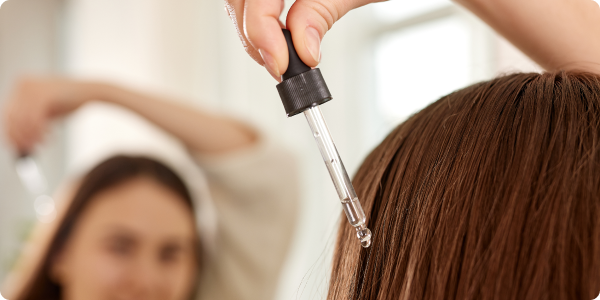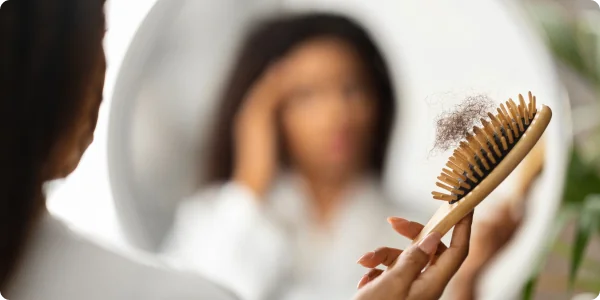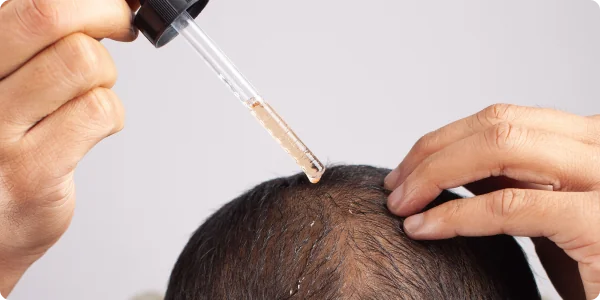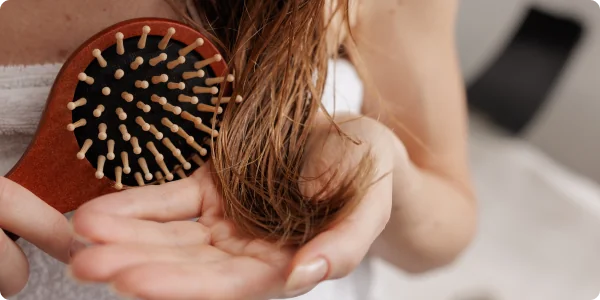
Hair loss affects millions of people worldwide, causing not just physical changes but also emotional distress. Among the various treatments available, minoxidil stands out as one of the most studies and proven effective options. Originally developed as a blood pressure medication, minoxidil’s hair growing properties were discovered as an unexpected side effect, leading to its development as a topical treatment for hair loss.
Understanding how minoxidil works, what types of hair loss it can treat, and how to use it effectively is crucial for anyone considering this treatment. This comprehensive guide explores the science behind minoxidil and provides practical insights for those seeking to combat hair loss.
The Science of Minoxidil: How It Stimulates Hair Growth
The main mechanism behind minoxidil’s effectiveness is its ability to widen blood vessels, a process called vasodilation. When applied to the scalp, minoxidil causes the tiny blood vessels around hair follicles to dilate, significantly increasing blood flow to the area. This enhanced circulation delivers more oxygen, nutrients and growth factors directly to the hair follicles creating an optimal environment for hair growth.
The improved blood supply helps revitalize dormant or weakened hair follicles, particularly those in the early stages of miniaturization – the process where follicles gradually shrink and produce thinner, shorter hairs before eventually stopping hair production altogether.
Minoxidil also extends the active growth phase of the hair cycle known as the anagen phase. The normal hair cycle is three phases: anagen (growth), catagen (transition), and telogen (resting). If people experience hair loss, the anagen phase becomes progressively shorter, while the telogen phase lengthens, resulting in less time for hair growth. By prolonging the anagen phase, minoxidil allows hair follicles more time to produce longer, thicker hair strands. Additionally, it helps shift follicles from the telogen phase back into the active growth phase “waking up” dormant follicles and encouraging them to begin producing hair again.
Types of Hair Loss Minoxidil Can Treat
Minoxidil is not a universal solution for all types of hair loss, but it has proven highly effective for specific conditions, particularly those related to genetic factors and hormonal influences.

Androgenetic Alopecia
Androgenetic alopecia is also known as male pattern baldness or female pattern hair loss. This hereditary condition affects both men and women, though it manifests differently in each gender. In men, it typically begins with a receding hairline and crown thinning, while women usually experience diffuse thinning across the top of the scalp.
Minoxidil treats this condition by counteracting follicle miniaturization. Androgenic alopecia occurs when hair follicles are sensitive to dihydrotestosterone (DHT), a hormone derived from testosterone. Over time, DHT causes follicles to shrink, producing progressively thinner and shorter hairs until they stop producing hair altogether.
Pattern Baldness
Clinical studies have shown minoxidil’s effectiveness in treating pattern baldness. The medication works best on the crown area of the scalp, where it can achieve significant improvement in hair density and thickness. Results are generally less dramatic along the hairline, particularly in areas of complete baldness where follicles may have been dormant for extended periods.
When minoxidil is most effective
Minoxidil is most effective when used in the early to moderate stages of hair loss. The treatment works best when hair follicles are still present but producing thin, weak hair rather than complete baldness. Starting treatment at the first signs of thinning yields better results than waiting until significant hair loss has occurred.
The medication can also be beneficial for those experiencing diffuse hair thinning, where hair loss occurs across the entire scalp rather than in specific patterns. This type of hair loss is more common in women and often responds well to minoxidil treatment.
Minoxidil Formulations: Choosing the Right Strength and Type
Minoxidil is available in several formulations, each designed to meet different needs and preferences. Understanding the differences between these options is essential for selecting the most appropriate treatment.

2% vs 5% solutions
Minoxidil comes in two main concentrations: 2% and 5%. The 5% solution is generally more effective but may also cause side effects. Clinical studies have shown that 5% minoxidil produces better results in terms of hair count and hair weight compared to 2%.
The 2% concentration was originally developed for women, as early studies suggested they might be more sensitive to side effects. However, more recent research has shown that many women can safely use and benefit from the 5% concentration. The choice between concentrations should consider individual tolerance, the severity of hair loss, and personal response to treatment.
Some Other formulations may be combined with additional mediations for hair loss like finasteride and tretinoin.
Foam vs liquid
Minoxidil is available in both liquid and foam formulations, each with distinct advantages and disadvantages.
The liquid formulation was the original form of topical minoxidil and remains widely used. It’s often less expensive than foam and may be easier to apply to specific areas of the scalp. However, the liquid version can leave residue, may cause scalp irritation due to its propylene glycol content, and can make hair appear greasy or weighed down.
Foam formulations were developed to address some of the drawbacks of liquid minoxidil. The foam is generally easier to apply, leaves less residue, and doesn’t contain propylene glycol, making it less likely to cause scalp irritation. It also tends to dry faster and doesn’t affect hair styling as much as the liquid version. However, foam formulations are typically more expensive and may be less effective at penetrating thick hair.
Recommendations
While both men and women can use minoxidil, there are some gender-specific considerations.
Men typically use the 5% concentration and may prefer the liquid formulation for targeted application to specific areas like the crown or hairline.
Women may start with the 2% concentration, though many can safely progress to 5% if needed. The foam formulation is often preferred by women because it’s less likely to interfere with hair styling and causes less scalp irritation. Women should also be aware that minoxidil use during pregnancy and breastfeeding is not recommended.
What to expect: timeline, results and realistic outcomes
Setting realistic expectations is important for anyone beginning minoxidil treatment. Understanding the typical timeline and what constitutes realistic outcomes can help prevent disappointment and ensure continued adherence to the treatment regimen.

Initial shedding
When starting minoxidil treatment many users experience and initial shedding phase which can be alarming. This temporary increase in hair loss typically occurs within the first 2-6 weeks of treatment.
This shedding occurs because minoxidil accelerates the hair cycle, moving follicles from the resting (telogen) to the growth (anagen) phase. The old, weak hairs are shed to make way for new, healthier growth.
The shedding phase usually lasts 2-4 weeks and then gradually decreases. It’s important to continue treatment during this period, as discontinuing minoxidil due to initial shedding will prevent the positive effects from developing.
Timeline for visible results
Visible improvements from minoxidil typically follow a predictable timeline:
- Weeks 1-4: Initial shedding may occur, with no visible improvement in hair growth
- Weeks 4-12: Shedding decreases, and very fine new hair may begin to appear
- Months 3-4: New hair growth becomes more noticeable, appearing as fine, light-coloured hair
- Months 4-6: Hair continues to thicken and darken, with noticeable improvement in overall hair density.
- Months 6-12: Maximum benefits typically become apparent, with continued improvement in hair thickness and coverage.
Results vary significantly between individuals, and some people may see improvements earlier or later than this timeline.
Realistic expectations
Minoxidil is not a cure for hair loss, and it’s important to have realistic expectations about what the treatment can achieve. In clinical studies, most users experience stabilisation of hair loss and some degree of regrowth, but complete restoration of a full head of hair is rare.
The degree of improvement varies, with some individuals experiencing dramatic results and others seeing more modest benefits. Typical outcomes are a reduction in hair loss rate, increased hair density and improvement in hair thickness and quality.
Minoxidil must be used continuously to maintain results. Stopping treatment will result in the loss of any hair that was maintained or regrowth with the medication, typically within 3-4 months of discontinuation.
Using Minoxidil safety: Application tips and potential side effects
Proper application technique and awareness of potential side effects are essential for safe and effective minoxidil use.

Proper application technique
Before application the scalp should be clean and completely dry before application. For liquid formulations, use the provided dropper or spray applicator to apply the medication directly to the affected areas of the scalp, not to the hair itself. Gently massage the solution into the scalp with your fingertips.
For foam formulations, dispense the recommended amount into your palm and apply it directly to the affected areas of the scalp. The foam should be massaged gently into the scalp until it disappears.
After application, wash your hands thoroughly to prevent accidental contact with other areas of the body. Allow the medication to dry completely before styling your hair or going to bed. Most formulations should be left on the scalp for at least 4 hours before washing.
Applying more than the recommended amount will not improve results and may increase the risk of side effects.
Common side effects
Most people tolerate minoxidil well, but some side effects can occur. Local side effects affecting the scalp are most common and include:
- Scalp irritation, including redness, itching or burning
- Dry, flaky scalp
- Contact dermatitis in sensitive individuals
- Temporary hair texture changes
- Increased hair shedding during the initial treatment period
Less common but more serious side effects can include systemic absorption effects, particularly if the medication is overused or applied to broken skin. These may include:
- Dizziness or feeling lightheaded
- Rapid heartbeat
- Swelling of hands, feet or face
- Unwanted hair growth on other parts of the body

When to consult a healthcare professional
Several situations warrant consultation with a healthcare provider when using minoxidil:
- Severe or persistent scalp irritation that doesn’t improve with continued use
- Signs of systemic side effects such as dizziness, rapid heartbeat, or swelling
- No improvement after 6 months of consistent use
- Sudden or severe increase in hair loss
- Signs of infection at the application site
- Any concerning symptoms that may be related to the medication
It’s also advisable to consult with a healthcare provider before starting minoxidil treatment, particularly for individuals with heart conditions, low blood pressure, or other medical conditions that might be affected by the medication.
For those seeking convenient access to hair loss treatments, e-surgery provides online consultations and delivery of prescribed treatments.










